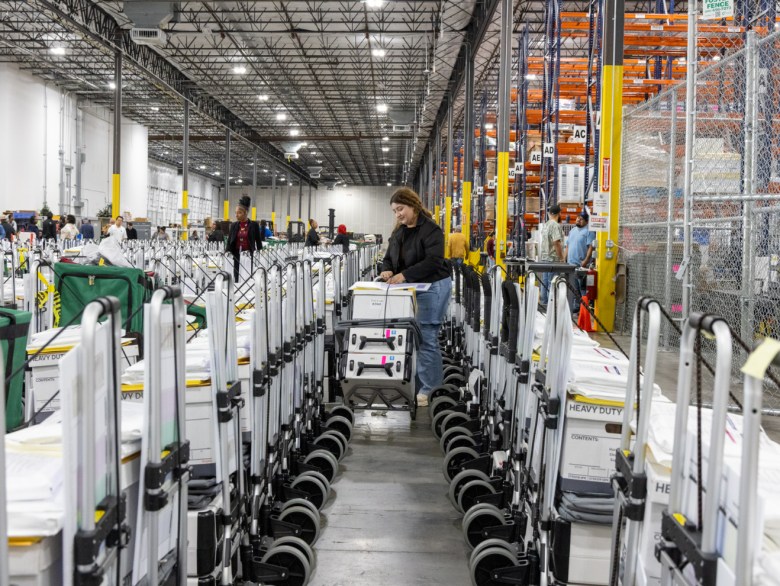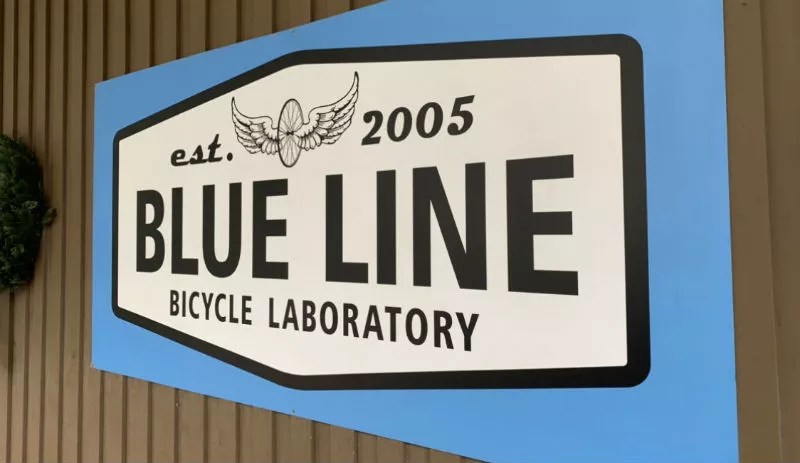EPA Demands Cleanup at San Jacinto River Toxic Waste Pits
Jackie Medcalf grew up in Atascocita playing on the banks of the San Jacinto River. By the time she moved to East Harris County’s Highlands community in 2003, she and several of her neighbors were suffering from health conditions they attributed to toxic waste pits in the river.
So it was a long time coming when the Environmental Protection Agency approved last week a much-anticipated cleanup plan for the San Jacinto River Toxic Waste Pits Superfund Site, imposing 40 new conditions on “responsible parties” International Paper Company and McGinnes Industrial Maintenance Corp., mandating that any changes to the plan must be approved by the EPA.
The site near Interstate 10 is so contaminated that it was designated a “superfund” hazardous waste disposal site, meaning it has severe soil and water contamination and contains hazardous chemicals like dioxins and sulfuric acid.
The EPA has not yet established a timeline for cleanup or penalties if the plan isn’t followed. The companies have been under a court mandate to produce a final cleanup plan, called a “Final (100 percent) Remedial Design,” since 2018. Spokespersons for International Paper and McGinnes did not respond to requests for comment.
Medcalf, who created the nonprofit Texas Health and Environmental Alliance in 2015, said she and other advocates will continue their watchdog roles to ensure the work gets done.
“It’s a huge milestone and a huge moment for our community, but in some ways I feel like our work is just getting started,” she said. “The EPA has all of the regulatory tools and all of the legal tools at its disposal to ensure that this site keeps moving forward. We will — with our regulatory expertise and legal expertise and with the power of all the people who stand with us — make sure that we continue pushing for this to move forward. Continuing in that watchdog role is critical.”
Medcalf and her family moved away from the river in 2013, but she’d already been diagnosed with endometriosis and symptoms related to the early stages of cervical cancer. It’s difficult to prove that a toxic waste site caused cancer, but she said she believes she was exposed to contaminants. Her father has multiple myeloma, which is one of the cancers closely associated with dioxin exposure.
“I have no idea what my health would be like if I’d stayed,” she said. “I don’t think I would have been able to have my children. I don’t think I would be OK if I still lived over there.”
Residents in the area have abnormally high rates of leukemia, lymphoma, bronchitis, and cancer, Medcalf added. Precinct 3 Harris County Commissioner Tom Ramsey said earlier this year that the superfund site near Interstate 10 is in the “worst place possible,” where young people occasionally ignore the signs and go swimming.
The area is booming with several master-planned communities and about 330,000 people.
“When the floods happen, the pit is going to end up in Galveston Bay,” Ramsey said at a Commissioners Court meeting in April. “We know who did it. Waste Management and International Paper, they are the responsible parties. I refer to them as the irresponsible parties. They have the money to [clean it up] I know they do because they sponsor golf tournaments and all kinds of things.”
Ramsey also plans to keep a close eye on the EPA and the responsible companies to ensure they clean up the site as mandated by law. The commissioner has a long history with contaminated water in Harris County and says he committed to cleaning up toxic sites when he was elected in 2021.
The commissioner recently recalled that, while studying environmental engineering at Texas A&M in 1972, he and other Aggie students were tasked with evaluating water conditions in the Houston Ship Channel. They were told not to light a cigarette within 100 yards of the ship channel because “they were afraid of spontaneous combustion,” Ramsey said during an April commissioners court meeting.
“Essentially, the Houston ship channel in 1972 was a dead body of water,” Ramsey said. “The City of Houston was dumping raw sewage from its plants. That’s all been cleaned up since then. Essentially, we can go to that same spot today, and we can go fishing. The oxygen levels are great, but I’d recommend you not eat the fish.”
Unfortunately, the commissioner added, the same success story cannot be told for the San Jacinto River Waste Pits Superfund Site. The area has been in peril for more than a decade, with the two companies delaying a cleanup process while cancer clusters and toxic waste plague the neighborhood.
In the April Commissioners Court meeting — about five months before the EPA took action on the San Jacinto waste pits — Ramsey introduced a resolution “on the topic that bothers me the most in my precinct.”
“The resolution essentially says everyone deserves clean rivers, creeks, and air to breathe,” he said at the time. “It’s our duty to ensure the safety of our community for future generations. This starts with the state accurately reporting the heartbreaking reality of what people are facing in East Harris County, with cancer clusters emerging and areas affected by environmental factors relating to the San Jacinto River Waste Pits.”
Ramsey provided an emailed statement this week saying he will make sure the community’s health and safety come first, and that the cleanup is completed as quickly and responsibly as possible.
“While the EPA has not yet set a final timeline or penalties for delays, my office continues to press for a clear path on this cleanup,” Ramsey said. “We are working closely with the County Attorney’s Office, partnering with community advocates like the Texas Health and Environment Alliance, writing letters to and staying engaged with state and federal partners, and keeping constituents informed every step of the way. I’d also like to thank both Trump administrations for prioritizing this site after the previous administration ignored the issue.”
Medcalf said the San Jacinto River didn’t get on the EPA’s radar by coincidence.
“Hurricane Harvey impacted over 70 superfund sites on the Texas coast, but the one the nation heard about was the San Jacinto River Waste Pits, and it’s because our coalition has spent over 10 years being 100 percent committed to every ounce of this,” she said.
Medcalf and her team have studied the data, read the technical documents, and pored over lab reports, said the advocate, who has a background in environmental geology.
“We really screamed and advocated to the Texas Department of State Health Services for many years to study our health because we felt like we were disproportionately impacted by the San Jacinto River site,” Medcalf said. “The first study was produced in 2015, and we requested an update to that study because there were new cancers that people were concerned about.”
The San Jacinto River Toxic Waste Pits Superfund Site has been contaminated since the 1960s, according to environmental advocates.
Screenshot
The state health department studied a 250-square-mile area of Harris County and designated the entire region as a cancer cluster, Medcalf said.
“We know that when the area floods, when a storm surge comes in, contaminants from the waste pits are dispersed throughout our communities,” she said.
The river’s “southern pit” was successfully cleaned up in 2024, but the plan for a pit on the north side of the property was stalled for years by the responsible parties, according to a press release issued last week. The companies submitted multiple plans that did not meet the EPA’s requirements, the release states.
While the dump site doesn’t look like an ideal spot for a family picnic, there are no signs advising “no swimming,” Medcalf said.
“It truly is a matter of people being informed,” she said. “Living in that area, I learned that if something is wrong with your environment, the government is not necessarily going to send you a letter or knock on your door. I learned that the hard way, and that’s why we do what we do.”
“It is crazy that it’s sitting there,” she added. “There’s a temporary cap on top of most of that northern pit, but it’s had repeated failures over the years and a need for repairs time and time again. It’s absolutely absurd that highly toxic contaminant material is just sitting there in the river above one of the most productive estuaries in the United States.”
The Environmental Protection Agency ruled last week that International Paper Company and McGinnes Industrial Maintenance Corp. have to clean up the San Jacinto River Toxic Waste Pits Superfund Site.
Screenshot
The site has been contaminated since the 1960s, and Medcalf said she’s been actively working with the EPA since 2011. The “legal wheels are turning,” she said, and EPA’s legal counsel is negotiating with the responsible parties. That process will end with a consent decree or a Unilateral Administrative Order, which would force the parties to comply or face penalties, Medcalf explained.
“Residents have lost loved ones. Many have developed cancer and other illnesses, but they never stopped. This is a blue-collar community. They show up for work and they don’t quit until the job is done,” Medcalf said. “They stayed united during the years of delays, and the community will hold the companies accountable to follow this cleanup plan. This community isn’t going anywhere and they aren’t going to stop pushing for a full, effective cleanup.”

Reign Bowers is an outdoor enthusiast, adventure seeker, and storyteller passionate about exploring nature’s wonders. As the creator of SuperheroineLinks.com, Reign shares inspiring stories, practical tips, and expert insights to empower others—especially women—to embrace the great outdoors with confidence.






Post Comment